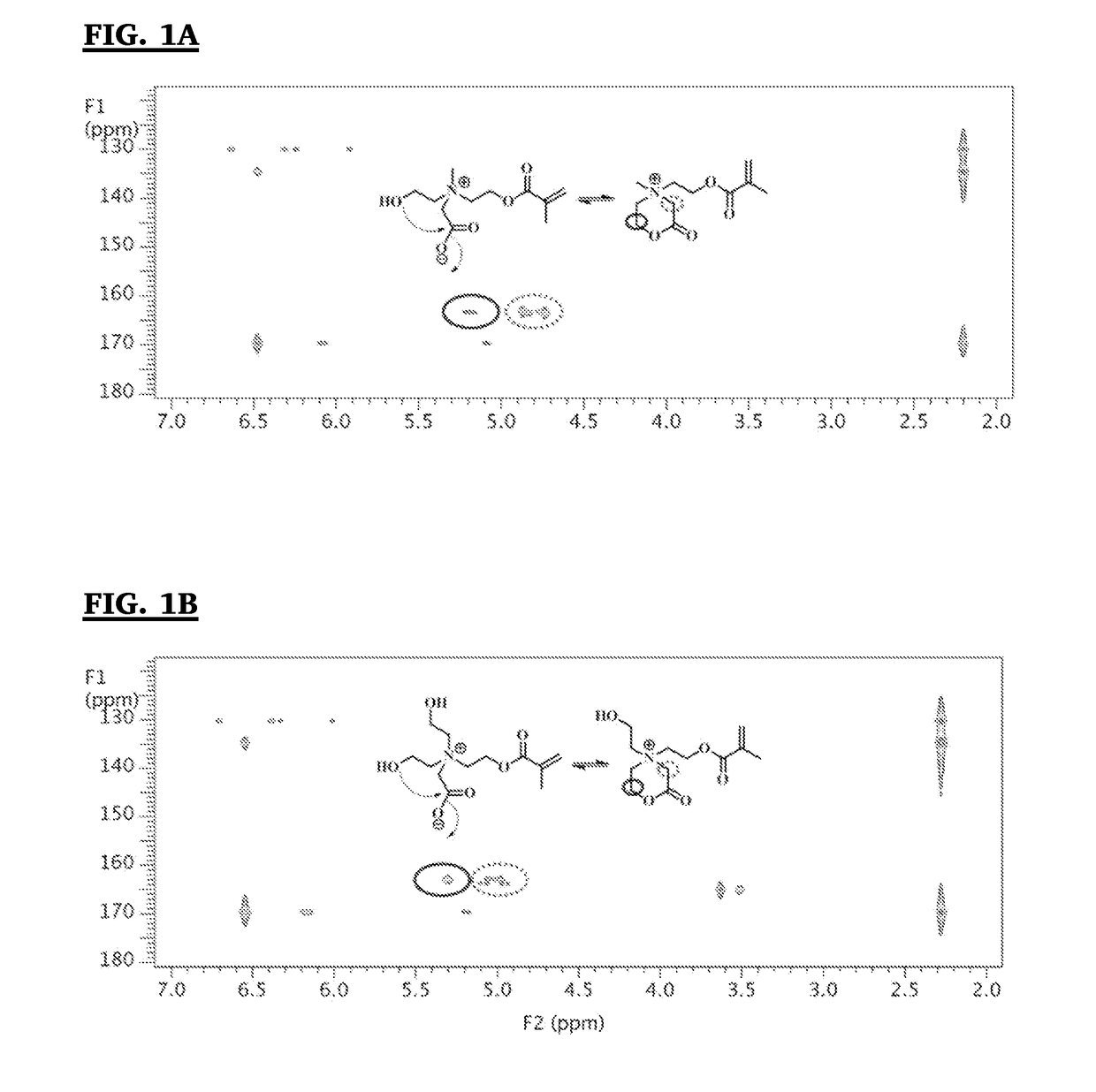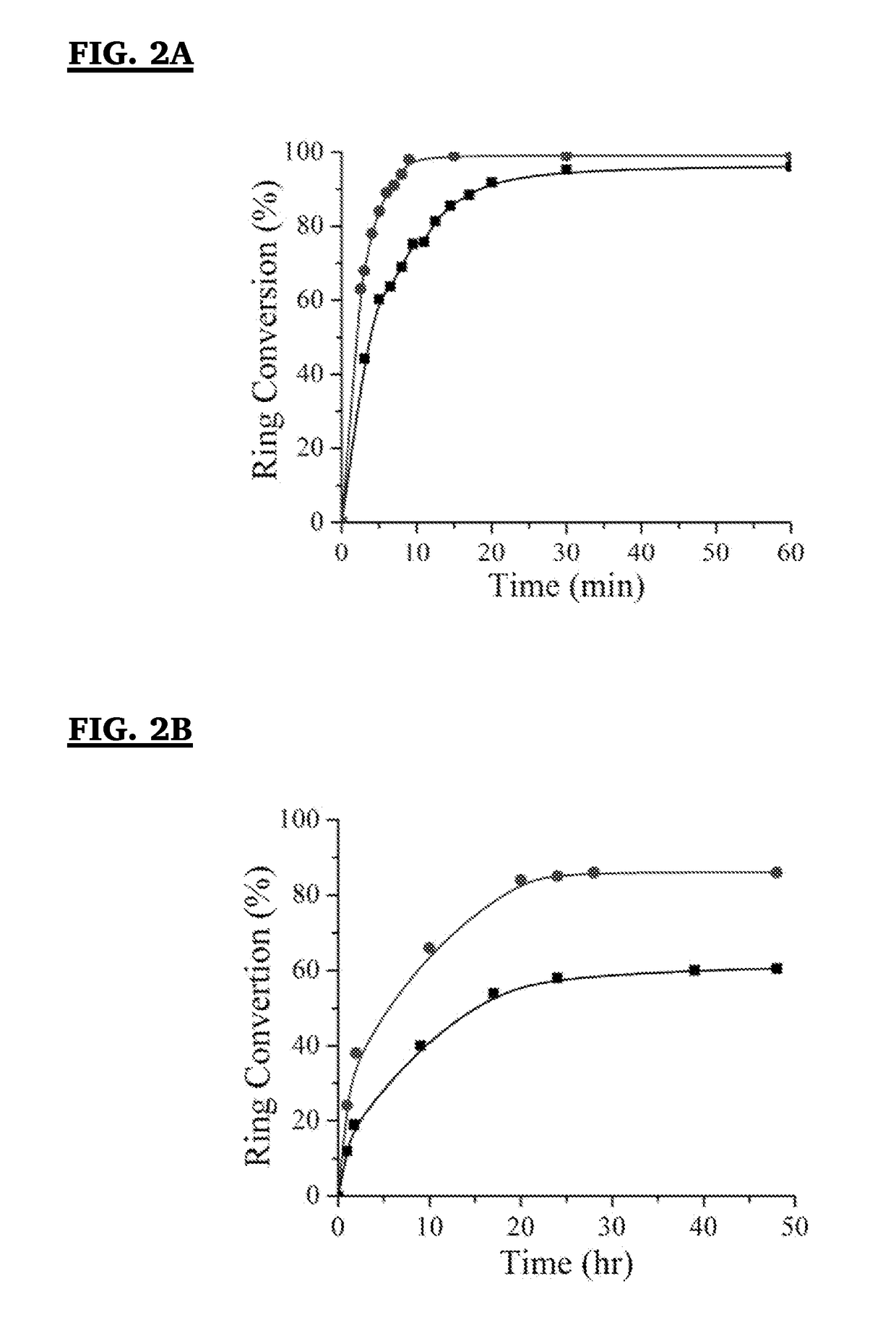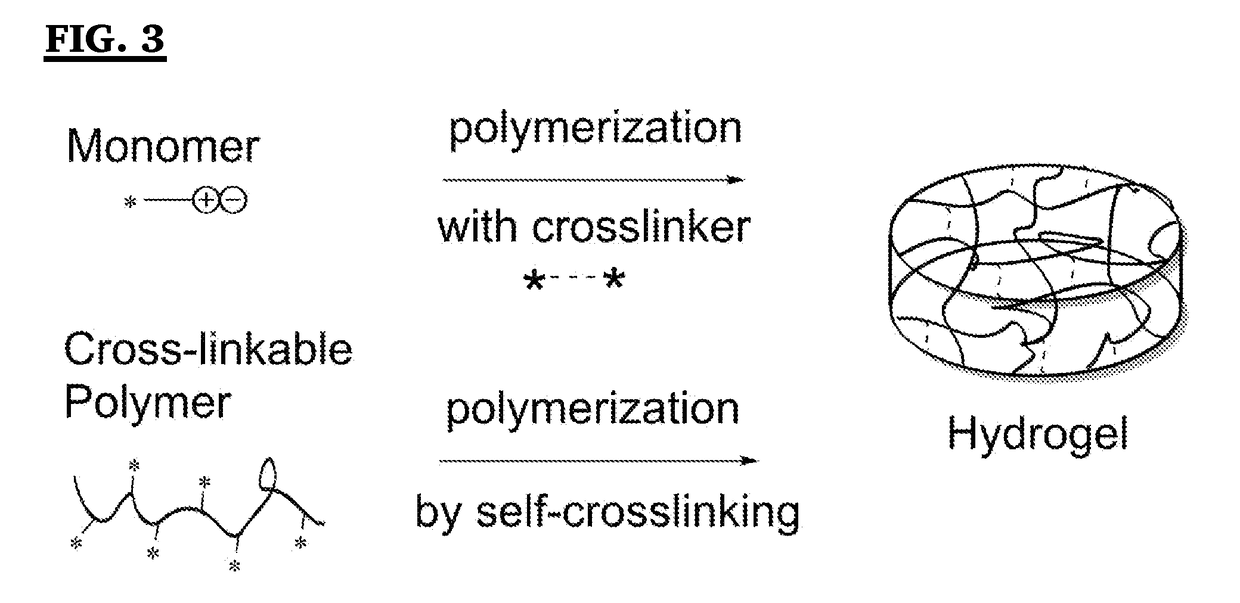Switchable antimicrobial and antifouling carboxybetaine-based hydrogels and elastomers with enhanced mechanical properties
- Summary
- Abstract
- Description
- Claims
- Application Information
AI Technical Summary
Benefits of technology
Problems solved by technology
Method used
Image
Examples
example 1
Synthesis of CBOH1 Monomer
[0145]Synthesis of 2-((2-hydroxyethyl)(2-(methacryloyloxy)ethyl)(methyl) ammonio)acetate)(CBOH1) was achieved using a three step method as show in Scheme 4, below.
[0146]First, synthesis of 2-((2-hydroxyethyl)(methyl) amino)ethyl methacrylate (compound LIX) was achieved as follows. 20 mL (174 mmole) of N-methyl diethanol amine (LVIII), 120 mL of anhydrous tetrahydrofuran (THF) and 60 g (566 mmole) of anhydrous sodium carbonate powder were added to a 500 mL three-neck round bottom flask. The mixture was cooled down to 0° C. with an ice-bath. 17 mL (174 mmole) of methacryloyl chloride (diluted with 30 mL of anhydrous THF) was added dropwise. Then the ice-bath was removed, and the reaction was stirred at room temperature overnight. After the reaction was completed, the reaction solution was filtered. The solvent in the filtrate was removed with a rotary evaporator, and the residue was dried with a vacuum pump fitted with a liquid nitrogen cold trap. The product...
example 2
Synthesis of CBOH2 Polymer
[0149]The synthesis procedures of CBOH2 were similar to that of CBOH1 described in Example 1 above, except that the starting material is tri-(2-hydroxyethyl)amine (LXII) rather than N-methyl diethanol amine. The reaction procedures are outlined in Scheme 5, below.
[0150]First, synthesis of 2-(bis(2-hydroxyethyl)amino)ethyl methacrylate (compound LXIII) was achieved as by reacting tri-(2-hydroxyethyl)amine (LXII) with methacryloyl chloride in the manner set forth in Example 1 above to form compound LXIII. 1H NMR (300 MHz, CDCl3) δ6.13 (s, 1H), 5.59 (s, 1H), 4.27 (t, J=5.6 Hz, 2H), 3.62 (t, J=5.3 Hz, 4H), 2.89 (t, J=5.6 Hz, 2H), 2.75 (t, J=5.3 Hz, 4H), 1.95 (s, 3H) 1 hydroxy peak not seen due to overlapping signals. 13C NMR (300 MHz, CDCl3) δ167.82, 136.32, 126.14, 62.83, 59.93, 56.89, 53.72, 18.48.
[0151]Second, synthesis of (2-(tert-butoxy)-N,N-bis(2-hydroxyethyl)-N-(2-(methacryloyloxy)ethyl)-2-oxoethanaminium bromide)(compound LXIV) was achieved as by reacti...
example 3
Ring Open Kinetics
[0153]The ring open kinetics of the CBOH1 and CBOH2 monomers were studied by dissolving monomers in their ring form in 0.2 M Na2CO3 buffer solution in D2O at pH 7.3. (See, FIG. 12) Calculations were performed with the same method as ring-formation; the final conversion within 5 hours was 89% for CBOH1 and 65% for CBOH2. From the aspect of thermal dynamics, CBOH2 is expected to have a lower dissociation constant compared to CBOH1 under the same condition. From the aspect of kinetics, CBOH2 is expected to have a higher reaction coefficient for ring formation process and has a lower reaction coefficient for ring open compared to CBOH1. Our results reflected both expected trends.
PUM
| Property | Measurement | Unit |
|---|---|---|
| Composition | aaaaa | aaaaa |
| Mechanical properties | aaaaa | aaaaa |
| Fouling properties | aaaaa | aaaaa |
Abstract
Description
Claims
Application Information
 Login to View More
Login to View More - R&D
- Intellectual Property
- Life Sciences
- Materials
- Tech Scout
- Unparalleled Data Quality
- Higher Quality Content
- 60% Fewer Hallucinations
Browse by: Latest US Patents, China's latest patents, Technical Efficacy Thesaurus, Application Domain, Technology Topic, Popular Technical Reports.
© 2025 PatSnap. All rights reserved.Legal|Privacy policy|Modern Slavery Act Transparency Statement|Sitemap|About US| Contact US: help@patsnap.com



